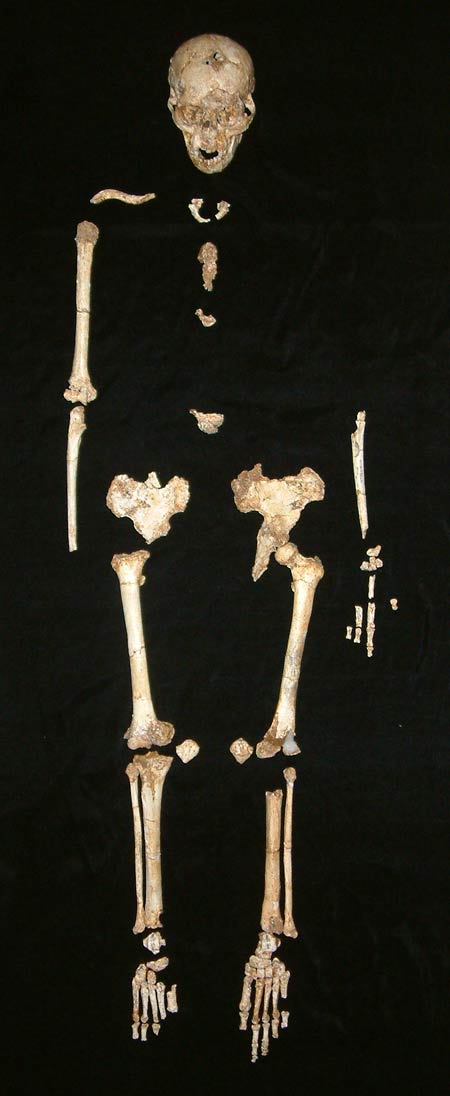Hobbit Skeleton Replica Goes On Display

A cast of a "hobbit" skeleton will go on public display for the first time as part of a human evolution symposium April 21 on Long Island, New York.
The hobbit fossils (and near fossils) were discovered on the Indonesian island of Flores in 2003. Some scientists think the discovery represents a new species of human. Others argue it was human like us, only with a disorder called microcephaly which gave it an unusually small head.
The skeleton is set to go on display at Stony Brook University's Staller Center for the Arts as part of the 7th Human Evolution Symposium there.
"A cast of the entire skeleton of the specimen has never been displayed anywhere, inside or outside of Indonesia. This is a real first," said William Jungers, a professor of anatomy at Stony Brook. As the debate rages on about Homo floresiensis — the so-called hobbit, the symposium will bring together the researchers currently in the process of describing and analyzing the remains.
Convened by Richard Leakey, a paleoanthropologist, Kenyan politician and conservationist who is a professor at Stony Brook, the symposium, "Hobbits in the Haystack: Homo floresiensis and Human Evolution," is hosted by the Turkana Basin Institute at Stony Brook. Leakey will give closing remarks at the symposium, which is aimed at the public, not researchers. "At the symposium, we’ll do our best to separate fact from myth on the controversial issues surrounding this prehistoric hominin, which has gained international celebrity status," Jungers said. The cast will be on display courtesy of the National Research and Development Centre for Archaeology in Jakarta, Indonesia. It is not yet clear how many people will have a chance to see it.
"The cast of the hobbit fossils will be unveiled at the symposium and will be on display to symposium attendees. It may be on public display thereafter," said Elizabeth Wilson of the Turkana Basin Institute.
With a brain about a third of the size of modern humans and small physical stature, Homo floresiensis has emerged as a fascinating twist to the story of human evolution. Dated to 17,000 years ago, the specimens possessed an unexpected number of primitive morphologies more reminiscent of earlier Homo erectus or even Australopithecus, than modern humans. Among the researchers presenting at the April 21 conference are Michael J. Morwood, University of Wollongong, Australia; Thomas Sutikna, National Research and Development Centre for Archaeology, Jakarta; Mark Moore, University of New England, Australia; Dean Falk, Florida State University; Peter Brown, University of New England, Australia; Matthew Tocheri, of the Smithsonian Institution; Susan Larson, Stony Brook University; William Jungers, Stony Brook University; and Charles Hildebolt, Washington University, St. Louis. The all-day symposium is open to the public.
Sign up for the Live Science daily newsletter now
Get the world’s most fascinating discoveries delivered straight to your inbox.
Why is yawning contagious?
Scientific consensus shows race is a human invention, not biological reality











